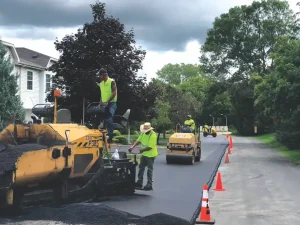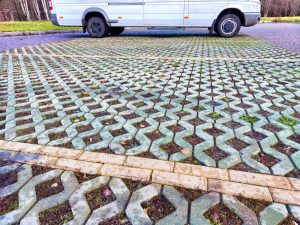A tack coat is a form of industrious glue, bituminous emulsion, or cutback used in the renovation or construction of roads to ensure the bonding of asphalt layers. It’s a product of a mixture of asphalt binder, water, and emulsifying chemicals, producing a sticky substance that is applied in a thin layer between hot mix asphalt (HMA) layers in asphalt paving. A tack coat is useful in creating an adhesive bond between HMA layers, ensuring pavements achieve better strength.
Due to its stickiness, tack coat helps form a secure bond between layers of asphalt which is key in preventing slippages that can potentially cause concentrated stresses resulting in pavement failure.
Purpose of Tack Coat in Asphalt Paving
Tack coat is an adhesive material applied between layers of asphalt concrete mainly to prevent the degradation of the roadway or pavement by keeping the asphalt concrete together. As such, tack coat is essential in prolonging the lifetime of the roadway by helping it attain a sturdy structure and reducing the tendency for the surface course layer to slide on the underlying layer.
In simpler terms, a track coat serves as a bond between HMA layers and in preventing a new HMA layer from sliding on the existing pavement layer.
When is Track Coat Needed?
Usually, a track coat is applied on an old or existing surface before a new HMA layer is placed. The application is usually done on an old existing asphalt layer or a Portland cement concrete (PCC) pavement. In other instances, track coat application is done between two new HMA layers.
Whether or not a track coat fulfills its role in asphalt paving depends on some factors. For instance, the type of asphalt material used for track coat plays is a huge determinant – whether asphalt binder or asphalt emulsion. In addition, the application rate of the track coat material also determines the extent to which it performs as expected.
How to Select Track Coat Material
Initially, cutback-type materials with the likes of RC800, RC 3000, and MC 3000 were commonly used for track coat application. This was until environmental concerns became an issue that reduced their applications.
Today, the widely used material for asphalt paving is asphalt emulsion, which comes in different grades – rapid set and slow set type materials. Examples of rapid emulsions include RS-1, RS-1h, CRS-1, and CRS-1h and slow set emulsions include SS-1, SS-1h, CSS-1, and CSS-1h. asphalt emulsion is a product of asphalt binder, water, and emulsifying agent.
How Much Track Coat Do You Need?
You’re now well-informed on what a track coat is, its function, the materials involved, and when it’s needed. Now you’re wondering how much track coat is needed for your asphalt paving. Well, this depends on the type and condition of the existing pavement or roadway surface. Is it relatively new, smooth, and clean? You’re going to need a minimum amount of track coat and vice versa is true.
Partner with Pro-Pave for your Asphalt Paving Need
At Pro-Pave, Inc., we’re a trusted and experienced commercial concrete and asphalt business since 2001. What drives us is the commitment to exceed our clients’ expectations through an unmatched quality of services delivered. No matter the nature of work, we have the means and team to deliver.
Check our services page or call (703) 433-9500 for more information.





